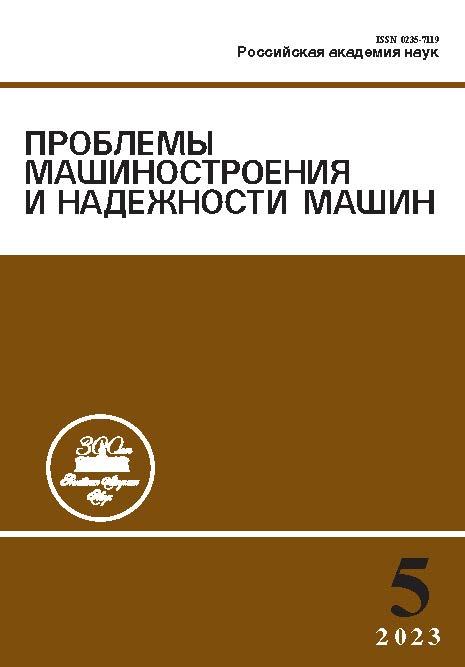Comparative Analysis of a Numerical Method and Machine Learning Methods of Temperature Determination of a Doped Lubricating Layer with Experimental Data
- Autores: Tokhmetova A.1, Albagachiev A.Y.1
-
Afiliações:
- Mechanical Engineering Research Institute of the Russian Academy of Sciences
- Edição: Nº 5 (2023)
- Páginas: 96-102
- Seção: ЭКСПЕРИМЕНТАЛЬНАЯ МЕХАНИКА. ДИАГНОСТИКА ИСПЫТАНИЯ
- URL: https://cardiosomatics.ru/0235-7119/article/view/675633
- DOI: https://doi.org/10.31857/S0235711923050164
- EDN: https://elibrary.ru/XADLOG
- ID: 675633
Citar
Texto integral
Resumo
This article compares machine learning methods and a numerical method of determination of the doped lubricating layer with experimental data. Based on the sweep method, the one-dimensional Fourier heat equation with boundary and initial conditions is solved. As a result of comparing numerical and predictive data with experiments, it can be concluded that machine learning models are better at predicting results compared to numerical data
Sobre autores
A. Tokhmetova
Mechanical Engineering Research Institute of the Russian Academy of Sciences
Email: aygerim.tokhmetova@mail.ru
101990, Moscow, Russia
A. Albagachiev
Mechanical Engineering Research Institute of the Russian Academy of Sciences
Autor responsável pela correspondência
Email: aygerim.tokhmetova@mail.ru
101990, Moscow, Russia
Bibliografia
- Zheng Z., Guo Z., Liu W. et al. Low friction of superslippery and superlubricity // A review. Friction. 2023. V. 11. P. 1121.
- Meng Y., Xu J., Ma L. et al. A review of advances in tribology // In 2020–2021. Friction. 2022. V. 10. P. 1443.
- Буяновский И.А., Хрущов М.М., Самусенко В.Д. Алмазоподобные углеродные покрытия: трибологическое поведение при граничной смазке. Часть II. Смазка химически модифицированным слоем // Материаловедение. 2021. № 10. С. 3.
- Kim B.K., Hyun J.S., Kim Y.H. et al. Effect of Boundary Layer Modification and Enhanced Thermal Characteristics on Tribological Performance of Alumina Nanofluids Dispersed in Lubricant Oil // Experimental Techniques. 2022. № 47. P. 737.
- Duan L., Li J., Duan H. Nanomaterials for lubricating oil application // A review. Friction. 2023. V. 11. P. 647.
- Тохметова А.Б., Михеев А.В., Тананов М.А. Исследования трибологических свойств моторного масла с содержанием фуллеренов // Проблемы машиностроения и надежности машин. 2022. № 4. С. 108.
- Тухтаров А.Р., Хузин А.А., Джемилев У.М. Фуллеренсодержащие смазочные материалы: достижения и перспективы (обзор) // Нефтехимия. 2020. № 1. С. 125.
- Strohmaier A., Waters A. Analytic properties of heat equation solutions and reachable sets // Math. Z. 2022. V. 302. P. 259.
- Hancock J.T., Khoshgoftaar T.M. CatBoost for big data: an interdisciplinary review // J Big Data. 2020. V. 7. P. 94.
- Шрам В.Г., Агафонов Е.Д., Лысянников А.В., Лысянникова Н.Н. Прогноз термоокислительных свойств смазочного масла с использованием методов машинного обучения // Известия Тульского государственного университета. Технические науки. 2018. № 12. С. 576.
Arquivos suplementares

















